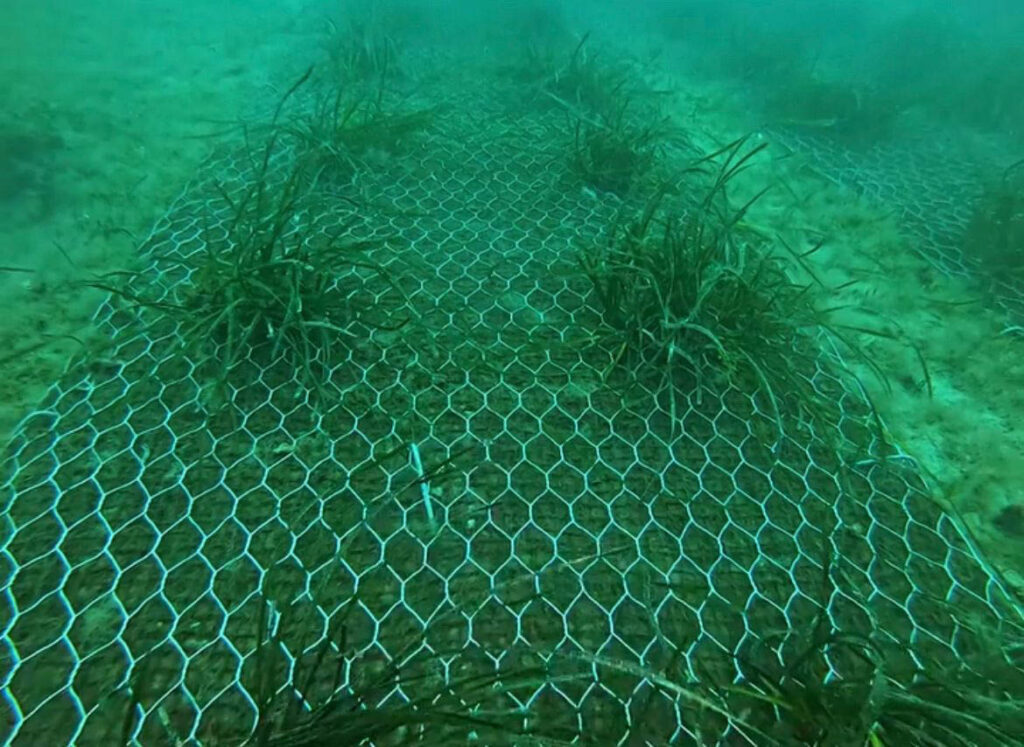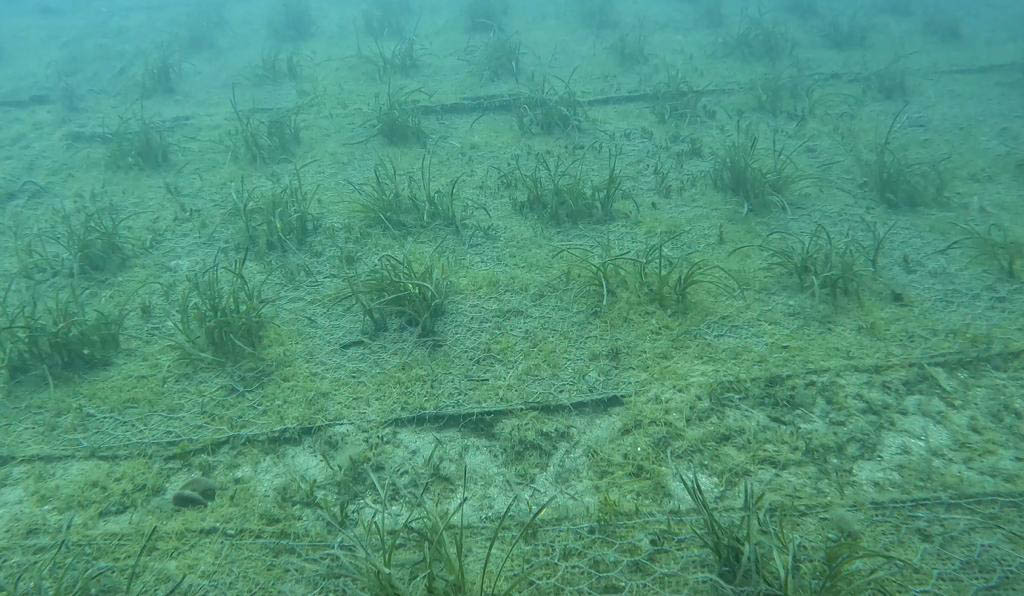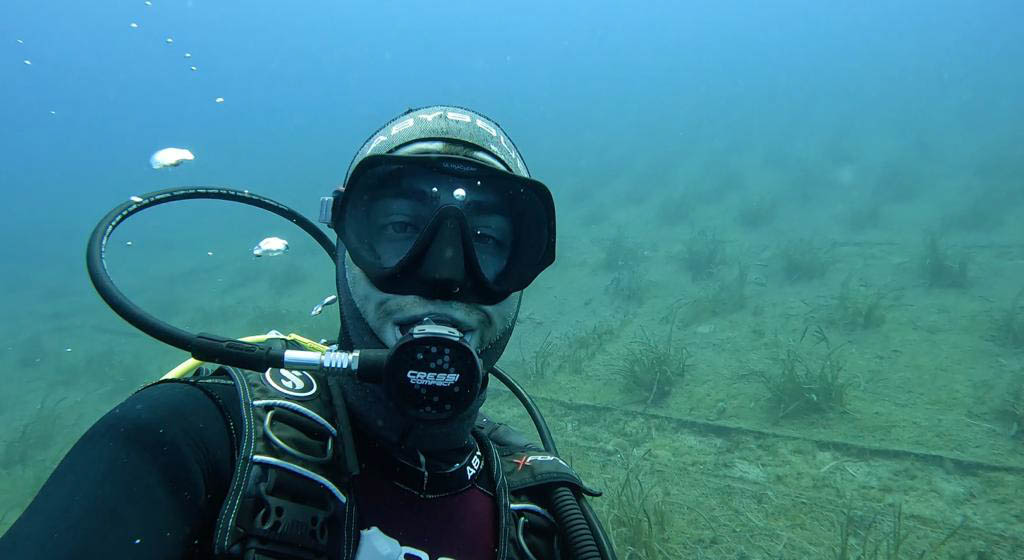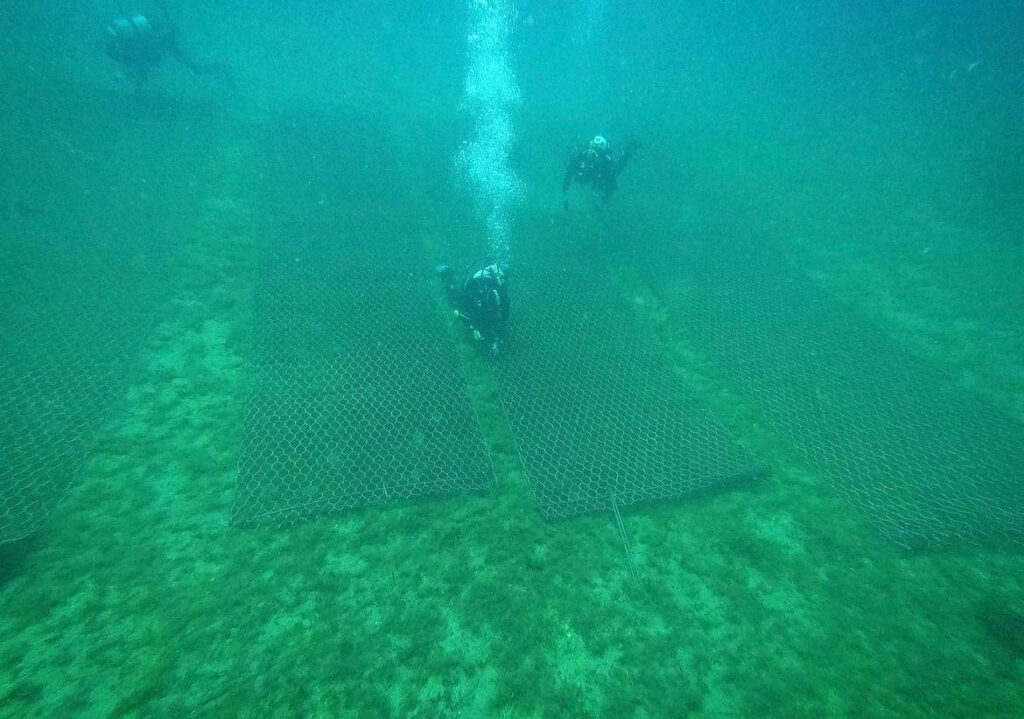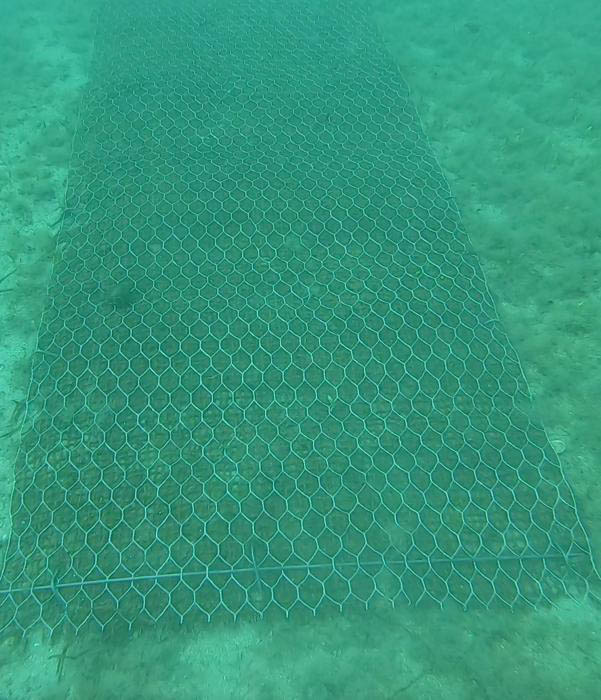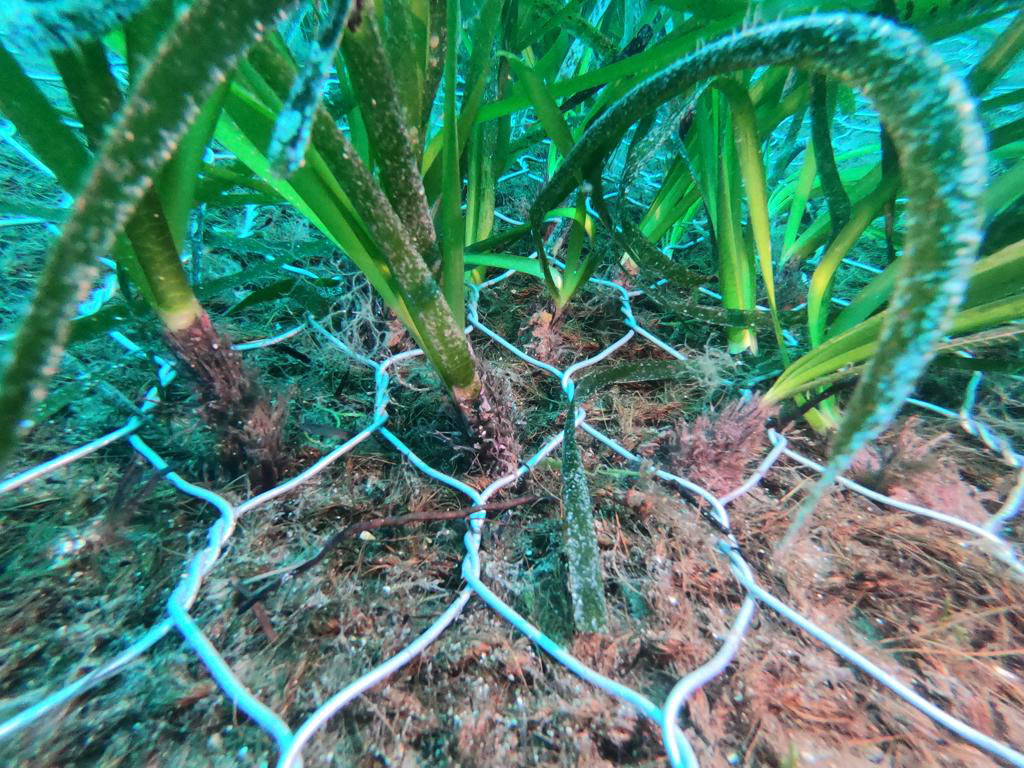A Project to Restore Endemic Seagrass, and Why It’s Important
Over a period of ten months, more than 140 thousand cuttings, spread over an area of 7 thousand square meters in the construction site area of the work were explanted and replanted in a more suitable area of the coast, accomplishing a biological record.
The record transplanting was done to save the Posidonia in the gulf, because it was decided to enlarge a part of the port of Porto Torres, but over a large seagrass meadow, so it had to be brought to safety.
We started with the placement of one hundred and fifty bio-geomat, structures that allowed us to be able to attach the plant to the substrate. So far, 80 percent of the plants have held out for the entire year, ensuring strong rooting to the substrate.
Why Did We Do It?
Posidonia oceanica plays a vital role in the marine ecosystem. It is a bioindicator of water quality, it hosts so many species and creates a refuge zone for them, so we are talking about a plant that allows different species to grow by finding the nutrients necessary for their survival and development. It produces oxygen and stabilizes the substrate present in the Mediterranean.
I am very glad to have actively participated in the project. It made me aware of the potential of this plant by teaching, to all those who participated, that we need to preserve this plant, not only because it is an endemic species of the Mediterranean, but because around this plant a real ecosystem is developed and created that allows the survival and development of so many species.
You can follow more of Paolo’s projects and adventures on social media through these links:
https://www.facebook.com/paolo.marras.5
https://www.instagram.com/paul.blake92/
